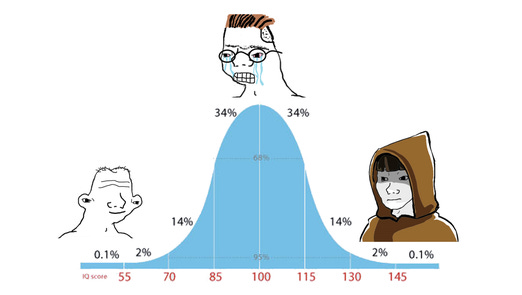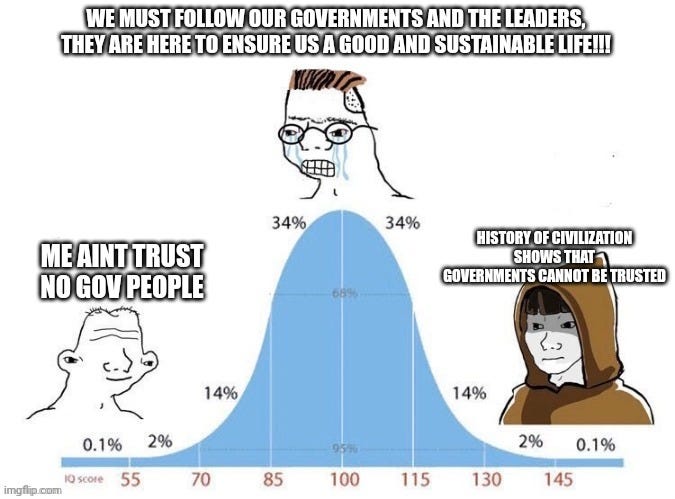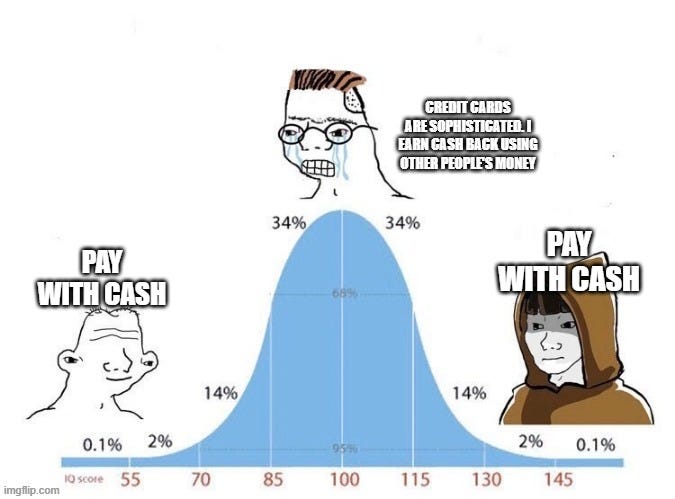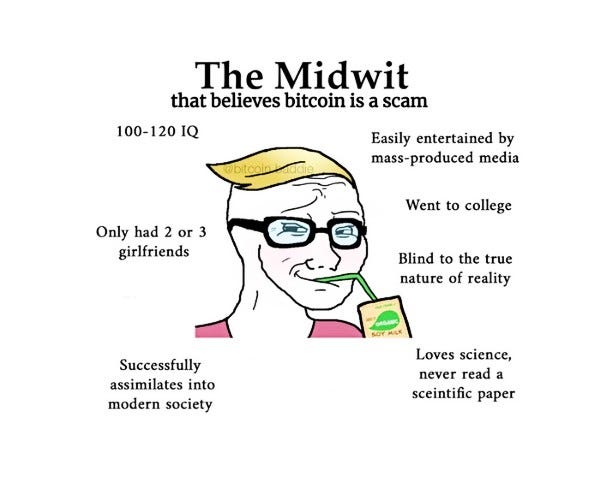The Lighthearted Midwit Meme on Intelligence Distribution
Dive into the humorous world of the 'midwit meme,' exploring its social media rise, its playful intelligence classifications, and how it shapes digital language.
The "midwit meme" is a humorous internet trend that has continued to resurface for a while now. The meme uses IQ distribution graphs to categorize people into three main groups based on intelligence: those with high intelligence, those with low intelligence, and those with average intelligence - affectionately referred to as "midwits." The diagrams often depict an individual with exceptional intelligence on the right side of the curve, someone with remarkably low intelligence on the left, and the midwit nestled comfortably in the middle.
While the term "midwit" may seem derogatory, the meme is generally received as lighthearted and comical. In meme culture, it's more of a friendly, albeit cheeky, nudge rather than a hard push. It's all in good fun, really, often used to spotlight the quirks and habits of those with average intelligence, such as their tendency to overestimate their abilities or fall prey to common biases.
Now, if you're like me and find yourself in a perpetual state of catching up with internet lingo, here's a nugget of knowledge. Social media is not just a meme factory or a news pipeline; it's a breeding ground for new slang and a language evolution hotspot. This fact hasn't slipped past the eagle eyes of scientists who are now studying the lingo-slinging ways of the internet to understand better how we, the humble homo sapiens, communicate.
Slang, that cheeky and informal cousin of language, is a staple of our daily banter, social media quips, and quick-fire mobile messages. It's been dissected and studied from every angle as a social phenomenon, with factors like gender, ethnicity, and socioeconomic status donning the Sherlock Holmes hat in shaping our slang construction.
In a world where a thumbs-up emoji and a 'lol' can convey a vast array of emotions, it's hardly surprising that the endurance of a slang term hinges on its linguistic adaptability. Those terms that fit just right are more likely to be embraced, celebrated, and ultimately immortalized in the annals of internet fame. So while we may suspect that new slang phrases like "left curver," "midwit," and "right curver" are sprouting on social media, pinning down these elusive vernacular critters for confirmation can be tricky.
The midwit meme has become a popular way to express humour and commentary on social media platforms and internet forums. It has also inspired variations and spin-offs, such as memes that use other types of distribution graphs to classify different groups of people.
On the vibrant stages of social media platforms, including the likes of Reddit, Twitter, Discord, Telegram, among others, I've witnessed the persistent prevalence of unique slang phrases such as "left curver," "midwit," and "right curver." Despite not having any formal recognition or standardization, these phrases have intriguingly emerged as an informal way to describe the distribution of IQ scores in a population.
Picture it like this: imagine a kind of "Goldilocks and the Three Bears" situation, but for intellect. These terms aim to capture the spectrum of human intelligence, from the super-smart 'right curvers' to the less gifted 'left curvers,' and of course, the 'midwits' who occupy the comfortable middle ground. It's as if each term represents a different bowl of porridge or a distinctively comfortable bed in the world of IQ.
These terms are often used in conversations about political discussions, current affairs or culture, and social psychology, which may indicate a desire to measure and understand intelligence. Some use these phrases to denote IQ scores, either their own or another person's, while others use them more broadly to refer to social patterns of intelligence.
It is worth noting that the use of these terms is not without controversy. They oversimplify complex topics relating to intellect and can reinforce negative stereotypes and biases. Others contend that they can be a helpful shorthand for simplifying and making discussions of complicated problems more approachable.
Despite these disagreements, the terms "left curver," "midwit," and "right curver" continue to be prevalent on social media platforms. They have ingrained themselves into the larger cultural vernacular surrounding intelligence and IQ scores and are frequently utilized in memes, jokes, and other forms of internet humour.
Online, people now frequently debate and discuss societal patterns of intelligence using these phrases. So, do you identify as a left curver, midwit, or right curver? Share your thoughts in the comments!
In the ever-evolving landscape of social media, it's fascinating to observe the birth and growth of new slang terms like "left curver," "midwit," and "right curver." Whether they're the brainchildren of quick-witted netizens or stem from the relentless churn of meme culture, they've found a way to embed themselves into our collective digital vocabulary. They serve as a testament to the unique way we communicate online, fusing humor, intelligence, and a hint of controversy. But as we click our keyboards and tap our screens, let's remember to wield this linguistic power thoughtfully and always aim to foster understanding and inclusivity. After all, we're all part of this wide, weird, and wonderful IQ curve of life.
Obligatory disclaimer: Like any other kind of slang, it's essential to give it a thoughtful spin and remember; it's all about having a laugh without stepping on toes. After all, we're here for a good time, not a long debate on IQ distribution!
Thank you for taking the time to read my work. My writing is purposed to make us all think together, not to impose my thoughts. If you enjoyed it and found it valuable, there are many ways you can show your support and help me continue writing.
Become a patron by subscribing to my premium membership.
Share my blog with someone you know who may also find it interesting or useful.
Spread the word by sharing this post on your social media channels.
Leave a comment with your thoughts or questions to engage in a dialogue and give me feedback.
I deeply appreciate your support and generosity, as writing high-quality content requires a significant investment of my time and energy. One of my primary goals with this blog is to achieve greater financial autonomy and reduce my reliance on traditional employment. While I don't expect to make a full-time income from this, every subscription and every bit of support brings me one step closer to this goal.
Thank you again for your readership and support.












